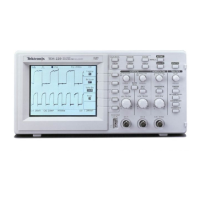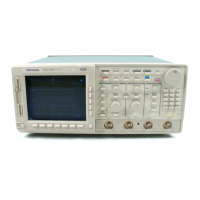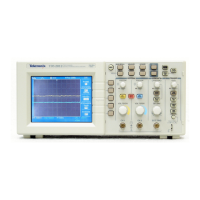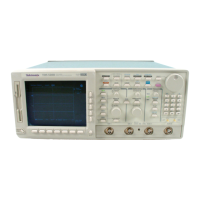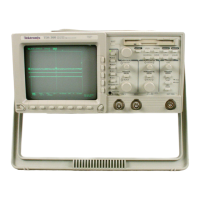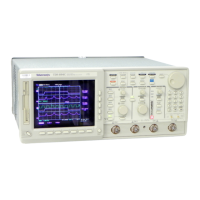Probe Cal
3–86
TDS 420A, TDS 430A, TDS 460A & TDS 510A User Manual
Changing Probes After a Probe Cal
Table 3–6 shows the action the oscilloscope takes based on the probe connected
and user operation performed.
Table 3–6: Probe Cal Status
Probe User Type of Probe Connected
2
Cal’d?
1
Action Simple Interface
3
Complex Interface
4
No Doesn’t
Matter
Initialized Initialized
Yes Power Off Initialized (probe data is retained) Initialized (probe data is retained)
Yes Power On Can not detect different probe: Display a Reuse Probe
Calibration Data Menu
Different probe: Initialized
Cal’d Probe: Pass
Different probe: Initialized
Yes Disconnect
Probe
Initialized Initialized
Yes Connect
Probe
Can not detect different probe: Display Reuse Probe
Calibration Data Menu
Different probe: Initialized
Cal’d Probe: Pass
Different probe: Initialized
1
Refers to a channel input that was successfully compensated at the time Probe Cal was last executed for the input
channel.
2
If no probe is connected, the probe status in the vertical main menu is always initialized.
3
A probe with a simple interface is a probe that can convey very limited information to the oscilloscope. Most passive
probes have simple interfaces.
4
A probe with a complex interface is a probe that can convey additional information. For instance, it might automatically
set the oscilloscope input channel impedance to match the probe, send the oscilloscope a unique probe identification
number, etc. Some optical probes and most active probes have complex interfaces.
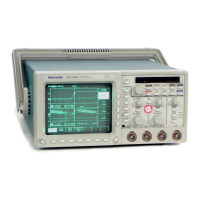
